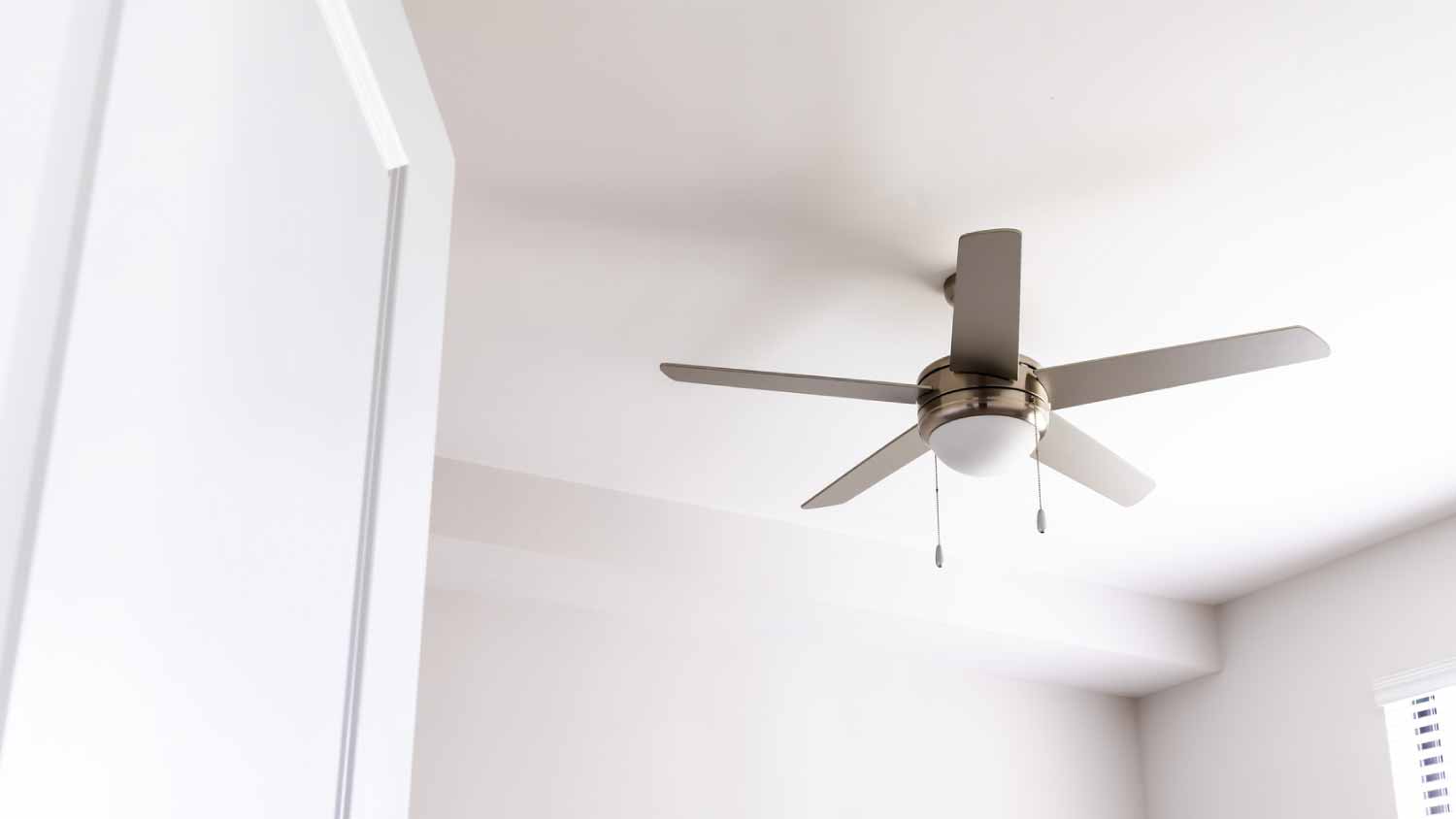How to Install a Solar Attic Fan for Better Airflow All Year Long
Defeat the heat with a solar attic fan
- Ladder
- Reciprocating saw
- Pry bar
- Hammer
- Tape measure
- Solar attic fan
- Roofing nails
- Weatherproof roofing sealant
It’s easy to overlook, but like the rest of your house, your attic requires a bit of attention throughout the year so that it doesn’t get too hot in summer or collect too much moisture in winter. Adding a solar attic fan can help with both of these issues, keeping your attic well-ventilated and relieving pressure on your HVAC system. We recommend hiring a professional for this job, but if you’re curious about the steps involved, you can keep reading to learn how to install a solar attic fan.
Prepping for Solar Attic Fan Installation
Solar attic fans offer many advantages, including adding much-needed ventilation to the stuffiest area of your home and helping reduce your energy bills. However, to experience all these benefits, your attic must be sealed off from the rest of your house before you kick off your solar-powered attic fan installation.
Otherwise, the fan can suck cool, air-conditioned air from the rest of your home and push it out through your attic vents, wasting energy and potentially raising your cooling costs. If there are any gaps or cracks between your attic and the rest of your home, close them up before installing an attic fan.
Make Sure the Attic Has Adequate Ventilation
 Photo: alexandre zveiger / Adobe Stock
Photo: alexandre zveiger / Adobe StockWhen it’s up and running, your fan will move hot air out of your attic, replacing it with cool air from outside. For this to work, you must have adequate ventilation in your attic—specifically, about 1 square foot of ventilation per 300 square feet of attic space.
If your attic doesn’t meet this recommendation, there are several ways to increase its ventilation, such as inserting roof and gable vents.
Choose the Right Spot
There are a few factors to consider when deciding where to install your solar attic fan. For starters, because these fans run on sunlight, you’ll want to position yours on the part of your roof that receives the most sunshine. (If you live in the United States, the ideal spot is on the south-facing side of your roof.)
Then, head into your attic to pick a specific location. Generally speaking, you’ll want to choose a place between two rafters and a couple of feet (or more) beneath your roof ridge. However, every fan model is different, so it’s best to check your manufacturer’s installation instructions for specific guidelines on where to place your fan.
Measure and Mark the Center Point
 Photo: Gajus / Adobe Stock
Photo: Gajus / Adobe StockUse a tape measure to find the distance between the two rafters where you’ll install the fan, then mark the center point with a marker. With a hammer or drill, drive a nail or screw through that center point so that you can easily see it when you’re on the roof.
Prepare to Cut a Hole in the Roof
If your solar attic fan came with a circular template, grab it and head outside. If not, take a large piece of cardboard and set the fan on top of it. Trace the outline of the fan’s base with a marker, then cut out the template.
After inspecting your ladder (and following all other important ladder safety tips), climb up to your roof and find the spot you marked. Place the template on top (with the nail or screw in the middle of the circle), and use chalk to outline the diameter over your shingles.
Cut the Hole
 Photo: andrey / Adobe Stock
Photo: andrey / Adobe StockWith a reciprocating saw, cut along the chalk line to create a hole in the roof. Be careful not to cut through the rafters or any other structural elements.
Make Space for the Flashing
 Photo: KaeC'sImages / Adobe Stock
Photo: KaeC'sImages / Adobe StockBefore attaching the fan to your roof, you’ll need to lift the shingles around the hole so there’s room for the flashing to slide underneath the shingles. The method for this will depend on the type of shingles you have, but you may need to gently loosen the shingles with a pry bar or pull out any nails or staples to remove individual shingles.
Secure the Fan
Test the fit by sliding the fan over the hole, making sure that the flashing goes between the shingles and roof sheathing. Remove the fan and apply weatherproof roofing sealant to the bottom side of the base (near the outer edge). Put the fan back into place over the hole, taking care not to get any sealant on the roof.
Secure your fan to the roof using the nails or screws that came with it. (If you aren’t sure where they go, consult your installation guide.) Add another layer of sealant around the flashing and nails or screws.
Replace Shingles Around the Fan
 Photo: bildlove / Adobe Stock
Photo: bildlove / Adobe StockIf you removed any shingles around the opening, put them back in place using a hammer and roofing nails.
DIY vs. Hiring a Pro
If you’re on a budget, you might be tempted to save money by tackling this project without professional help—especially if you already have the tools for the job. Exact costs depend on the type of fan you buy, but in general, it will take a few hundred dollars and the better part of an afternoon to install it yourself. If you hire a pro, solar attic fan installation costs between $300 and $1,000 and generally only takes a couple of hours.
However, there are a few reasons why it’s better to let a local attic fan installer handle this job. For starters, adding a solar attic fan to your home involves cutting a hole in your roof—and if you make a mistake, repairing it can be quite costly. It’s also important to seal the opening properly; otherwise, you could end up with water damage in your attic.
Frequently Asked Questions
Solar attic fans work in winter, but they serve a different purpose than they do in summer. During the colder months of the year, these fans improve air circulation within your attic, which helps remove condensation and moisture to prevent mold growth and protect your insulation and the structure of your home.
Yes, installing an attic fan can help lower your electric bill—particularly if you live in a hot and humid region. By replacing hot and stuffy air with cooler air, these fans help regulate the temperature in your attic and the rest of your home, taking some of the pressure off of your air conditioner.





- Furnace Repair
- Air Conditioning Repair
- HVAC Repairs
- Furnace Installation
- Wood & Pellet Stove Repair
- Dehumidifier & Humidifier Repair
- Heat Pump Companies
- Swamp Cooler Repair
- Wood Stove Services
- HVAC Companies
- Commercial A/C Repair
- Geothermal Installation
- Air Conditioning Installation
- Boiler Repair
- 24 Hour Furnace Repair
- Geothermal Repair
- Heat Pump Repair
- Humidifier Installation
- Thermostat Repair
- Thermostat Installation
- Nest Installation
- Heating & Cooling
- Heating Repair
- Furnace Cleaning
- Furnace Tune-Up
- HVAC Technicians
- Subcontractors
- Furnace Maintenance
- Plumbing & Heating Companies
- Wood Stove Inspection
- Mini Split Installation
- Wall Heater Repair
- Duct Installers









